We often get asked about what makes for a great staircase lighting. We compiled a quick list of tips as you look to invest in the staircase lighting in your home. Staircase lighting is a great way to increase the value of your home, whether looking to sell or enjoy it yourself, however, there are many pitfalls that could lead to a failed project if you do not pay particular attention to these things. Here they are.
1. Lighting in harmony with the type of stairs
The staircase lighting must be in harmony with the type of stairs installed. Traditional stairs with a solid and opaque riser are typically more flexible and can accommodate a large variety of stair lighting:
- staircase lighting installed at the bottom of the nosing of the steps

- staircase lighting installed recessed into the side wall, if any

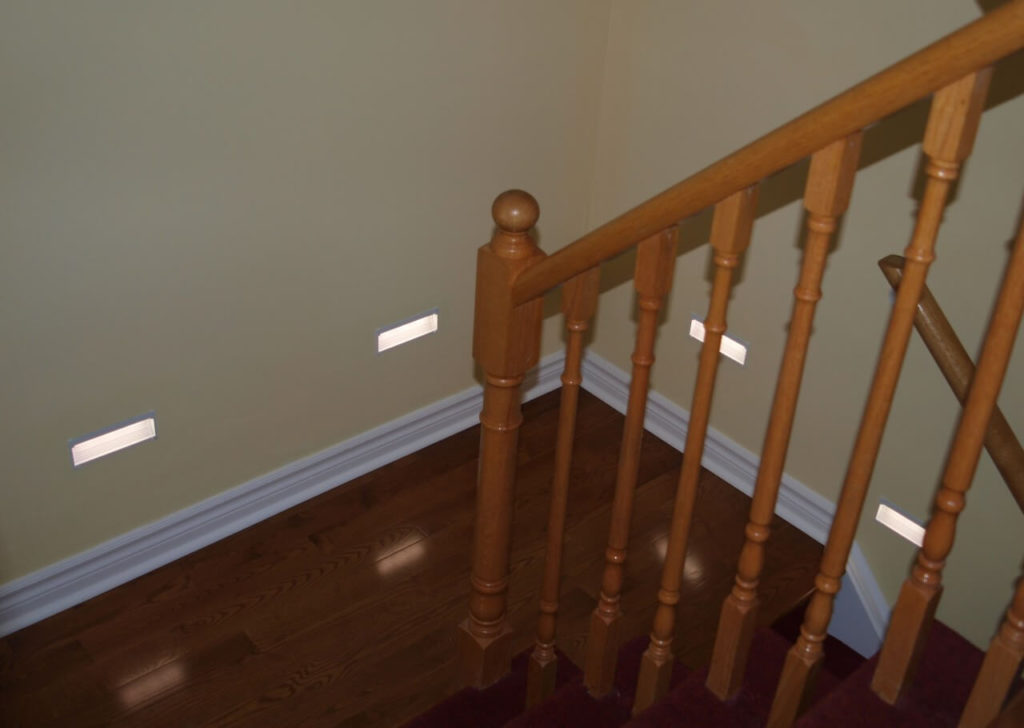
- staircase lighting installed at the bottom of the hand rail
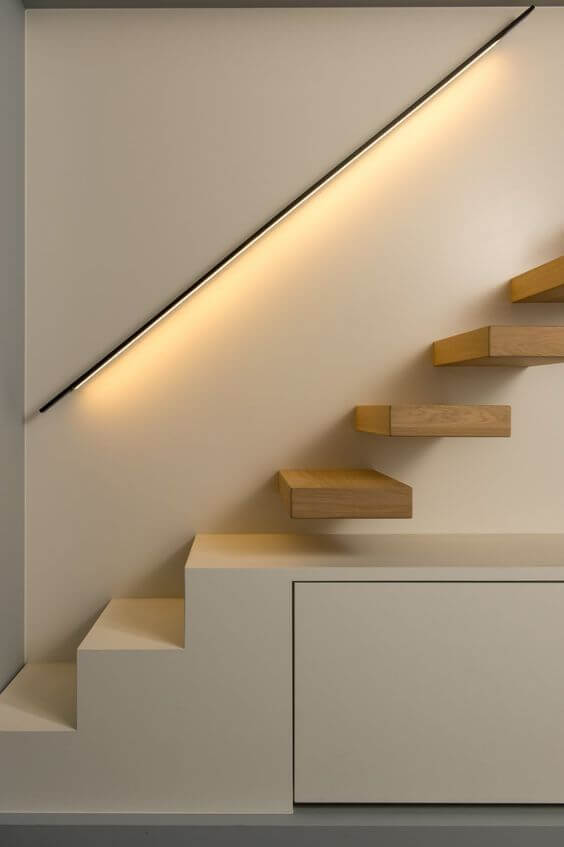
Floating stairs or stairs supported by a center beam are a little more pretentious when it comes to lighting. These are typically more modern and are often accompanied by a glass railing that often cannot accommodate lighting installed at the bottom of the hand rail.
The reason being, the handrail is often made of metal and contains various hardware for the glass railing that prevents the installation of lighting. If however, lighting can be accommodated in the handrail, glare may appear from the glass unless the lighting is angled towards the stairs, as per the following two pictures:
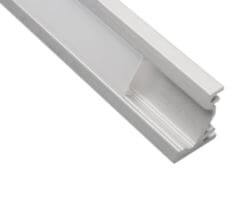
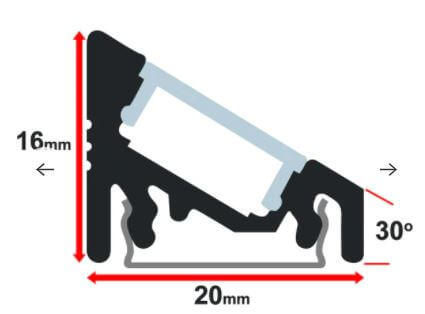
Often times floating stairs also do not have an adjacent wall to accommodate recessed in-wall lighting. In such instances, we recommend installing recessed lighting into the center beam that supports the stairs.
2. Staircase lighting should not be causing discomfort when the stairs are used
The staircase lighting installed should not be causing discomfort to anyone climbing up or down the stairs. This could easily happen when linear LED lighting is installed at the bottom of the nosing of floating stairs and the light escapes between steps and becomes uncomfortable for anyone below that flight of stairs. Installing a small riser for each step would help prevent this from happening, as per the following picture.
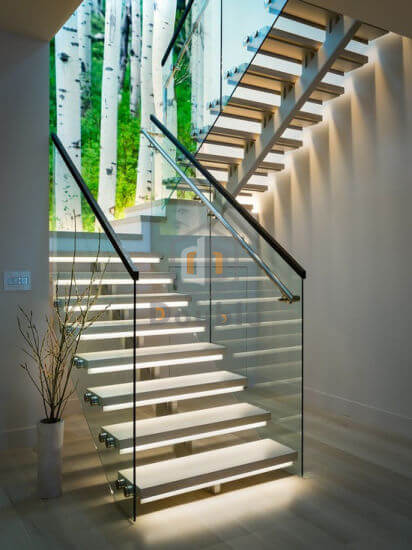
Another common mistake is installing stair lighting fixtures that are pointed in the direction opposite to the climbing direction, therefore blinding anyone climbing up the stairs. This should of course be avoided as well.
3. A right balance for brightness
Brightness is very important and a right balance should be attained for a good result. Too bright or too dimmed of a light will typically not bring up certain details of the stair finish. For example, the texture of wooden steps may not be visible at all if the brightness is not appropriate.
It should also be noted that people have different tolerances to brightness and it may be a good idea for all staircase lighting to be dimmable and adjustable as necessary depending on the season, weather conditions, time of day or personal preference.
4. Professional installation is a must
A proper and professional lighting installation is always paramount. Make sure there are no hanging wires or loose parts that can cause a tripping hazard or damage to the lighting system itself or your home. An improper installation is not only unsafe, but it can also be esthetically displeasing and deter potential buyers if you are looking to sell your home.
5. Pick the right color
There are many light colours available on the market today and picking the right colour for your home may be a daunting task. Our recommendation is for the stair lighting to blend in with the rest of the lighting in the main living spaces in your home.
Having different colour lighting throughout your home is not esthetically pleasing and will be hard on your eyes. If you are thinking of selling your home in the near future, we recommend picking a neutral light colour temperature like 3500K, as it is most likely to please a wider audience than the whiter nuances (4000K, 5000K, 6000K) or the warmer light colour temperatures (2000K, 3000K).
Another option, although more costly, is a lighting system that is white tunable or RGB-white tunable, in which case the light colour can be adjusted as needed based on personal preference. For reference, we included below the spectrum of correlated colour temperature for light.

6. Too much lighting
Lastly, too much lighting can be too much. Most staircases will also receive light from other lighting sources in their proximity, be it a lighting fixture hanging from the ceiling, a skylight or a window. For this reason it may not always be necessary for each step to be lit, and it often makes sense for lighting to be installed only on every other step.
For further questions, check out our FAQs at Stairs & Hallway Lighting | Commercial & Residential | Diana Lighting
We are also just an email or phone call away. We love lighting and are always happy to answer any questions you may have or chat about a project that you are considering.
Diana Lighting and Controls Inc. is a custom lighting manufacturer based in Toronto and staircase lighting is one of our main product lines and specialty. We are passionate about lighting and work closely with contractors and end-customers through the design, manufacturing and installation phases.
Custom LED Under Cabinet, Cove, Stairs & Hallway Lighting (dianalighting.com)

